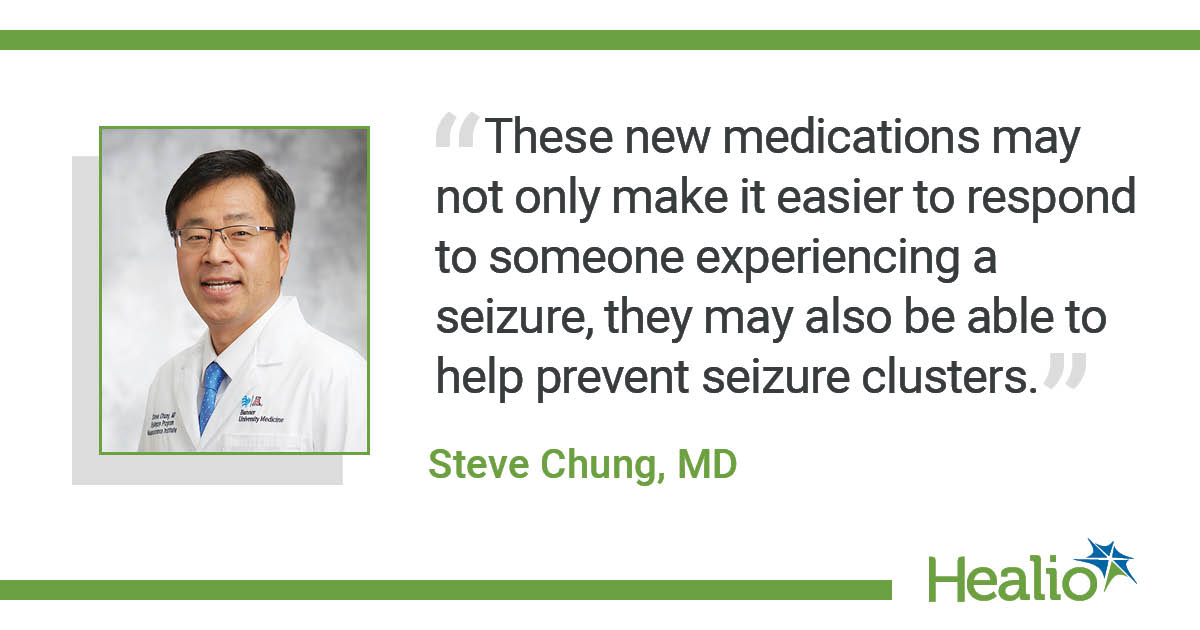Rescue medicines: Giving patients with epilepsy a new lease on life
In this guest editorial, Steve Chung, MD, a neurologist at Banner – University Medicine Neuroscience Institute in Phoenix, Arizona, discusses new treatment options for patients suffering from epilepsy. Chung, who specializes in epilepsy care, is trying to raise awareness among physicians of the development of certain rescue therapies that can spare patients from trips to the ED and improve their quality of life.
Epilepsy, one of the most common neurological disorders in the world, alters the daily lives of more than 3.4 million Americans. Aspects of life that we all take for granted, like driving a car, shopping for groceries, or just living independently, can all present frighteningly unexpected challenges. Over the years, medical researchers and the pharmaceutical industry have developed more than 25 medications for epilepsy that are helping to greatly reduce the fear of seizures.
New treatments continue to evolve, beyond simply treating seizures to now addressing many additional factors that improve a patient’s health and increase their ability to more easily use their medications and adhere to their treatment regimen. And recent advancements are providing patients even more hope and freedom through the increased use of medications that we now classify as “rescue medicines.”
Unfortunately, as new medications and novel approaches are coming online, some of these newer treatments are not very well-known, and many patients do not yet have access to them.

Treating a seizure at a moment’s notice
Rescue medicines are fast-acting treatments, typically a form of benzodiazepines, that can be given to those experiencing a seizure to quickly mitigate the effects and prevent life-threatening emergencies. Until recently, most of these medicines were only available for hospital use, and the few that were available to patients outside the hospital have been relatively difficult to use. Diastat AcuDial (Diazepam, Bausch) was the first form of this medication — a rectal gel that could stop a seizure within 15 minutes of being administered. But it came with barriers to use such as privacy issues and even legal regulations preventing teachers and school bus drivers from administering it to children.
Now we are seeing new forms of these medications, such as Nayzilam (midazolam, UCB) and Valtoco (diazepam, Neurelis), fast-acting nasal sprays that make it easier to be administered by bystanders. Additionally, research is ongoing for other faster routes of drug delivery.
These new medications may not only make it easier to respond to someone experiencing a seizure, they may also be able to help prevent seizure clusters.
Freedom from the condition
While rescue medicines are critical for keeping people out of the hospital, they do more than that. With these drugs, someone with epilepsy can feel comfortable in many situations that otherwise may have felt very uncomfortable, such as traveling.
With these new developments, people living with epilepsy will have more options available than ever before; but we need more awareness of these medications so that they are put into use. If more physicians and the public learn about these drugs and how to use them, we can keep countless people out of the emergency department.
I’m very optimistic about where we are headed in the field. We have been hoping for the development of these drugs for many years, and now we have them. But we must educate the public about how useful they can be. My hope is more people will be able to take advantage of these medications to help those living with epilepsy to continue to thrive.
References:
CDC. Epilepsy data and statistics. https://www.cdc.gov/epilepsy/data/index.html. Accessed April 16, 2020.
Epilepsy Foundation. Seizure medication list. https://www.epilepsy.com/learn/treating-seizures-and-epilepsy/seizure-medication-list. Accessed April 16, 2020.
Nayzilam [package insert]. Plymouth, MN: Proximagen, LLC; 2019.
Valtoco [package insert]. San Diego, CA: Neurelis; 2020.
Disclosure: Chung reports being a consultant and speaker for UCB, the manufacturer of Nayzilam.
